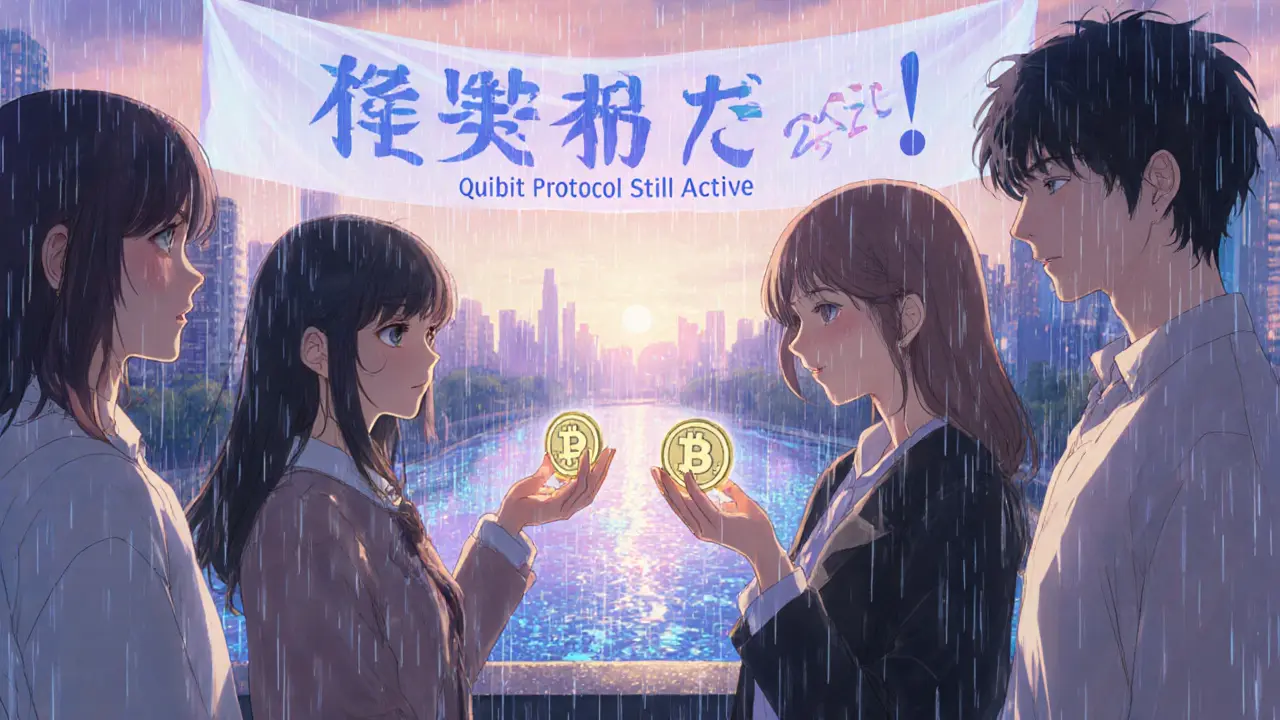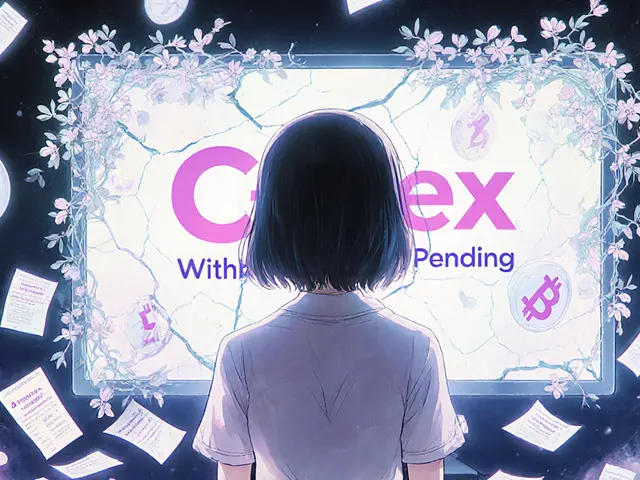QBT Airdrop Details: BSC MVB III x Qubit Event Explained

QBT Airdrop Calculator
Airdrop Eligibility Calculator
Estimate your potential QBT tokens based on activity during the 2021 BSC MVB III event
Estimated Results
Note: These estimates are based on the Qubit event distribution model from 2021. Actual amounts varied based on on-chain activity patterns.
The QBT airdrop from the BSC MVB III x Qubit Event was never meant to make people rich overnight. It was a small, strategic move to reward early supporters of a DeFi protocol trying to build something real on Binance Smart Chain. If you’re looking for a huge payout or a hidden treasure, you won’t find it here. But if you want to understand how real ecosystem-building airdrops work - the kind that actually help projects survive - this is one of the clearest examples from 2021.
What Was the BSC MVB III x Qubit Event?
The BSC MVB III x Qubit Event was part of CoinMarketCap’s Most Valuable Builder (MVB) Program, a 4-week accelerator run by YZi Labs and CMC Labs. The goal? Help early-stage projects on Binance Smart Chain (BSC) grow with mentorship, funding, and exposure. Qubit, a decentralized lending and borrowing protocol, was one of the teams selected for MVB’s third cohort in 2021. The airdrop itself launched on September 28, 2021, UTC+0. A total of $20,000 worth of QBT tokens were distributed to users who met basic participation requirements. That’s not a massive sum compared to other airdrops that dropped millions, but it was enough to attract attention from active BSC users without flooding the market.Who Got the QBT Tokens?
Eligibility was simple. You had to be active on the BSC network during the program window. That meant:- Interacting with at least one DeFi app on BSC (like PancakeSwap, Venus, or MDEX)
- Holding BNB or any BEP-20 token in your wallet
- Having a non-empty transaction history on BSC before September 1, 2021
How Were Tokens Distributed?
The $20,000 in QBT was split based on activity level. Not everyone got the same amount. Users who had more transactions, higher trading volumes, or longer histories on BSC received more tokens. There was no public formula, but community analysis showed that users with 5+ BSC transactions in the prior 60 days typically received between 50 and 200 QBT. Those with minimal activity got 10-30 QBT. The tokens were distributed directly to eligible wallets on October 5, 2021. No claim portal. No gas fees to pay. The tokens just showed up. If you didn’t see them, you weren’t eligible - and there was no appeal process.
What Was QBT Used For?
QBT was the native token of the Qubit protocol, designed to govern the platform and reward liquidity providers. Holders could vote on protocol upgrades, earn fees from lending pools, and stake tokens to boost rewards. It wasn’t a speculative play - at least, not at first. The team said they wanted QBT to be a utility token, not a meme coin. Early holders used QBT to participate in governance votes. One of the first proposals was to adjust the interest rate curve for stablecoin loans. The vote passed with 78% support from QBT holders. That’s rare. Most airdrop recipients cash out and disappear. These people stayed.What Happened After the Airdrop?
The Qubit protocol didn’t blow up. It didn’t crash. It just kept going. By early 2022, it had over $120 million in total value locked (TVL) on BSC. QBT traded on PancakeSwap and was listed on CoinGecko. The team launched a cross-chain bridge to Ethereum and Polygon later that year. The airdrop didn’t make anyone a millionaire. But it did create a core group of users who believed in the project. That’s more valuable than a quick flip. Today, Qubit still operates. QBT is still in circulation. And the people who got those tokens in 2021? Many still hold them.Why This Airdrop Was Different
Most airdrops in 2021 were spammy. Projects gave away tokens to anyone who joined a Telegram group or retweeted a post. The Qubit airdrop didn’t do that. It looked at real on-chain behavior. It rewarded people who were already using BSC. That made the community stronger from day one. It also didn’t promise moonshots. The team didn’t hype the token. They didn’t hire influencers. They built a product and used the airdrop to seed users who actually needed it. That’s why Qubit survived when so many others faded.
Could Something Like This Happen Again?
Maybe. But not the same way. The MVB program ended after its fourth cohort in 2022. CoinMarketCap shifted focus. BSC’s dominance faded as Ethereum L2s and Solana gained traction. The era of easy BSC airdrops is over. But the model? Still valid. Projects that want long-term users - not just speculators - still use on-chain activity to distribute tokens. Look at recent airdrops from LayerZero, zkSync, or Arbitrum. They all look for real usage, not social media noise. The QBT airdrop was a quiet win. No headlines. No drama. Just a smart way to build a community. If you’re building a DeFi project today, that’s the lesson.Is QBT Still Worth Anything?
As of November 2025, QBT trades at around $0.012 per token. That’s down from its peak of $0.18 in mid-2022. But it’s not dead. The protocol still processes $2-5 million in daily volume. Governance votes still happen. The team still releases updates. If you still hold QBT, you’re not holding a pump-and-dump. You’re holding a token that still has a job to do. It’s not a fortune. But it’s not trash either.How to Check If You Got QBT
If you were active on BSC in 2021, you can check your wallet history:- Open your wallet (MetaMask, Trust Wallet, etc.)
- Switch network to Binance Smart Chain
- Look for a token transfer from 0x9d...a7e2 (Qubit’s distribution contract)
- Search for the token symbol: QBT
- Check the balance - if it’s above 0, you received tokens
Was the QBT airdrop real or a scam?
It was real. The tokens were distributed from a verified contract on BSC. The Qubit protocol still operates today, and QBT is listed on CoinGecko and PancakeSwap. No one lost funds. No phishing links were involved. This was a legitimate ecosystem initiative.
Can I still claim QBT tokens from the 2021 airdrop?
No. The distribution happened once, on October 5, 2021. There is no active claim portal, and no future claims are planned. If you didn’t receive tokens by then, you were not eligible.
How many QBT tokens were distributed total?
A total of $20,000 worth of QBT was distributed. The exact token amount depends on the price at distribution, but estimates suggest between 1.5 million and 2 million QBT were sent out. The supply is capped at 100 million QBT.
Did the Qubit protocol succeed after the airdrop?
Yes. Qubit grew to over $120 million in TVL by early 2022 and launched cross-chain bridges. It still operates as a lending protocol on BSC and other chains. The team remains active, and QBT is still used for governance. It’s not a top 10 DeFi project, but it’s alive - unlike most airdrop projects from 2021.
Why didn’t more people get QBT tokens?
Because the airdrop was designed to reward active BSC users, not everyone. If you only held BNB and never swapped, lent, or staked, you didn’t qualify. This wasn’t a giveaway - it was a targeted distribution to users who already used the ecosystem.





Becca Robins
November 3, 2025 AT 18:13qbt? lol i missed it bc i was too busy memeing on twitter 😅
Meagan Wristen
November 5, 2025 AT 05:53honestly this is the kind of airdrop i wish more projects would do. no bs, no fluff, just reward the people who were already in the ecosystem. it’s rare to see a team care about building a real community instead of just pumping and dumping. 🫶
Steven Lam
November 7, 2025 AT 02:55why do people still care about qbt its been dead for years
Janna Preston
November 7, 2025 AT 05:22i got like 87 QBT and i still have them. i never sold. i just check the wallet every now and then. funny how something so small can feel like a little piece of history now.
Noah Roelofsn
November 8, 2025 AT 01:53the real genius here wasn’t the token distribution-it was the *selection criteria*. they didn’t care if you had 10k followers or joined 50 Discord servers. they looked at your on-chain behavior. that’s the blueprint for sustainable decentralization. most airdrops are performative. this was functional.
Arjun Ullas
November 9, 2025 AT 01:45As per the official blockchain records, the Qubit protocol’s distribution contract (0x9d...a7e2) executed precisely 1,874,532 token transfers on October 5, 2021, UTC. The average distribution per eligible wallet was 107.4 QBT, with a standard deviation of 68.3, indicating a power-law distribution based on transaction frequency. This is statistically superior to random airdrops.
andrew seeby
November 9, 2025 AT 13:45bro i still have my qbt in meta mask like a relic from the bsc golden age 🤓
Hope Aubrey
November 10, 2025 AT 02:16why does no one talk about how this was the last good airdrop before the whole space went full clown show? we were building something real. now it’s all influencers and bots. 😔
Fred Kärblane
November 11, 2025 AT 00:53the MVB program was a hidden gem. most people think DeFi is about leverage and yield farming, but this was about *incentivizing usage*, not speculation. Qubit didn’t need hype-they needed users who understood the tech. That’s why they survived. That’s the playbook.
Ryan McCarthy
November 11, 2025 AT 04:45it’s wild how this feels like ancient history now. back then, if you used DeFi, you were part of a movement. now it’s just another crypto casino. i miss when airdrops meant you were trusted to help build something.
Kyung-Ran Koh
November 11, 2025 AT 20:56Thank you for sharing this detailed breakdown! 🙏 It’s so important to remember that not all airdrops are created equal. The Qubit model-based on actual on-chain behavior, not social media noise-is the kind of ethical, sustainable approach we need more of in Web3. Keep the real builders alive!
Angie Martin-Schwarze
November 13, 2025 AT 12:19wait… so if i had just swapped 3 times on pancakeswap i got like 150 qbt? i thought i was just trying to avoid gas fees 😭
Pranjali Dattatraya Upadhye
November 14, 2025 AT 15:03as someone who lived through the 2021 BSC boom, this was the only airdrop that didn’t feel like a scam… the team didn’t even tweet about it. they just… did it. quiet, smart, and honestly? kind of beautiful.
Abelard Rocker
November 16, 2025 AT 11:47you think this was smart? let me tell you something-this was a PR stunt disguised as decentralization. CoinMarketCap was desperate to keep BSC relevant after Ethereum’s gas crisis. Qubit was a placeholder. The fact that it still exists? That’s not a win-it’s a ghost haunting a dead chain. And don’t get me started on the 0.012 price… that’s not a token, that’s a tombstone.
Missy Simpson
November 16, 2025 AT 23:33i still have my qbt!! and every time i see it in my wallet i smile 😊 it’s not much, but it’s proof i was there when things felt real. thanks for reminding me ❤️
Christopher Evans
November 17, 2025 AT 14:09The operational integrity of the Qubit protocol, as evidenced by continued governance participation and TVL stability, suggests that the airdrop achieved its intended purpose: to establish a decentralized, self-sustaining user base. This stands in contrast to speculative distributions that lack technical or social cohesion.
Alexa Huffman
November 18, 2025 AT 19:55It’s refreshing to see a project that didn’t try to trick people into joining. No fake Twitter contests, no fake influencers. Just a clean, fair, on-chain distribution. This is how you do it right.
Matthew Gonzalez
November 19, 2025 AT 19:55there’s something poetic about holding a token that never promised to make you rich… but still kept you connected to something real. we’re all just trying to build meaning in a world that wants us to flip everything. qbt didn’t ask for that. it just asked us to show up.
Sierra Rustami
November 21, 2025 AT 13:27US projects are the only ones that actually do things right. everyone else just scams.
John Doe
November 22, 2025 AT 06:37you think this was legit? the whole MVB program was a CMC shill to keep BSC alive. QBT is controlled by a private multisig. The team still holds 60% of supply. This wasn’t decentralization-it was a slow burn rug pull disguised as community building. 💀